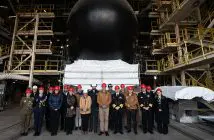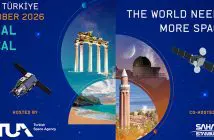
Written by staff writer.
The space sector has started 2024 at a rapid pace, with 14 launches from five countries in January. The month opened with a launch in India on New Year’s Day, and closed with Rocket Lab launching an Electron rocket from their New Zealand spaceport.
India’s Space Research Organisation (ISRO) had the year’s first launch, mid-morning on New Year’s Day (local time). Using a PSLV-DL rocket, the mission took into orbit an X-ray astronomy satellite and a multi-experiment payload module. There were also ten attached payloads on the PSLV’s fourth stage, which will perform various experiments for Indian research institutions.
SpaceX’s Falcon 9 rocket launches dominated the January launch schedule, with the type being used on nine of the 14 launches. SpaceX took another 21 Starlink satellites onto orbit from Vandenburg, California, on January 2; a geostationary satellite for Ovzon from Cape Canaveral on January 3; 23 second-generation Starlink V2 Mini internet satellites from Vandenburg on January 7; 22 Starlink satellites from Vandenburg on January 14; another 23 Starlink V2 Mini internet satellites from Cape Canaveral also on January 14; a Crew Dragon spacecraft for Axiom Space from Cape Canaveral on January 18; 22 Starlink satellites from Vandenburg on January 23; a further 23 Starlink V2 Mini internet satellites from Cape Canaveral on January 28; and 22 Starlink satellites from Vandenburg, also on January 28. Finally, a Falcon 9 rocket took Northrop Grumman’s 21st Cygnus cargo freighter into orbit from Cape Canaveral on January 30.
One of the most notable launches in January was the maiden commercial launch of United Launch Alliance’s Vulcan Centaur two-stage-to-orbit, expendable, heavy-lift launch vehicle. The rocket launched from Cape Canaveral on January 8, and the primary payload was Astrobotic’s Peregrine commercial lunar lander. There were 20 payloads from multiple customers, including NASA, onboard Peregrine.
Japan’s first launch of the year was on January 11, when the Cabinet Satellite Information Center sent an optical reconnaissance satellite into space. The IGS-Optical 8 (Intelligence Gathering Satellite) was carried into orbit by a H-IIA 202 rocket from the Tanegashima Space Center. Mitsubishi Heavy Industries manufactures the H-IIA 202 rocket. Because this satellite has dual military and civil applications, Japanese authorities released limited information about its launch and planned orbit.
China started its 2024 launch program on January 17 when a Long March 7 rocket launched from the Wenchang Satellite Launch Center. The rocket carried the Tianzhou-7 resupply ship into orbit. Tianzhou-7 was bound for the crewed Tiangong space station. Tianzhou-7 carried around 7.5 tonnes of supplies and took three hours to reach the space station.
The final launch of the month was Rocket Lab’s Electron rocket, which took four Spire Global LEMUR SSA satellites into space on January 31. Electron launched from Rocket Lab’s Mahia spaceport in New Zealand and was the only launch in January from the Southern Hemisphere. The satellites will operate for NorthStar Earth and monitor all near-Earth orbits from space, providing a vastly improved level of space situational awareness for clients.





